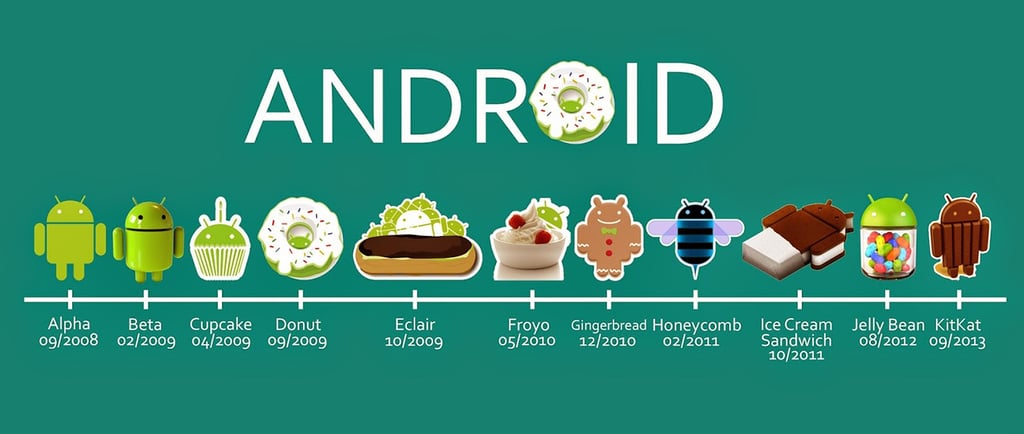Android Uncovered: The Evolution of Android: From Cupcake to the Modern Era
Explore the evolution of Android, from its early days with Cupcake to the modern era of AI-driven features. Discover how Android has shaped the smartphone experience and set trends in mobile technology.
ANDROID
8/24/20244 min read


The Evolution of Android: From Cupcake to the Modern Era
Android, the world’s most popular mobile operating system, has come a long way since its humble beginnings. With each new version, Android has not only added features but also fundamentally shaped how we use smartphones today. From the early days of Cupcake to the modern era of AI-driven functionality, Android’s evolution is a story of innovation, adaptability, and global impact.
The Birth of Android: A Revolutionary Mobile Operating System
In 2008, the tech world was introduced to Android—a new operating system that promised to change the way we interacted with our mobile devices. Developed by Android Inc. and later acquired by Google, Android was designed to be an open-source platform that could be used by a wide range of smartphone manufacturers. This flexibility set it apart from other operating systems at the time and paved the way for Android’s rapid growth.


Cupcake to Donut: The Early Days
Android’s journey began with Cupcake (Android 1.5) in 2009, which brought significant improvements to the user interface and introduced the first on-screen keyboard—a game-changer for early touchscreen smartphones. Following Cupcake, Donut (Android 1.6) arrived with support for different screen sizes, laying the foundation for Android’s versatility across various devices.
These early versions established Android as a serious contender in the mobile OS market. The introduction of features like the Android Market (now Google Play Store) allowed users to download and install apps, marking the beginning of the app-driven mobile experience we’re so familiar with today.
Eclair to Jelly Bean: Expanding Horizons
With Eclair (Android 2.0/2.1) in 2009, Android introduced key features such as Google Maps Navigation and voice-guided turn-by-turn directions, which quickly became essential tools for smartphone users. Froyo (Android 2.2) and Gingerbread (Android 2.3) continued to refine the user experience, adding features like Wi-Fi hotspot capabilities and improved power management.
The release of Honeycomb (Android 3.0) in 2011 was a significant milestone, as it was the first version designed specifically for tablets. This move demonstrated Android’s adaptability, catering to the growing demand for larger screens and new form factors.
The era of Ice Cream Sandwich (Android 4.0) brought a unified user interface for both smartphones and tablets, while Jelly Bean (Android 4.1-4.3) focused on performance enhancements, introducing the concept of "Project Butter" to ensure smoother animations and a more responsive UI.
KitKat to Marshmallow: Maturity and Refinement
By the time KitKat (Android 4.4) was released in 2013, Android had matured into a highly capable operating system. KitKat introduced a sleek new design and improved memory management, making Android more accessible to devices with lower specifications.
Lollipop (Android 5.0) marked a visual overhaul with the introduction of Material Design, a design language that emphasized clean, bold graphics and fluid motion. This update not only improved the aesthetic appeal of Android but also enhanced usability.
Marshmallow (Android 6.0), released in 2015, focused on user control, introducing features like app permissions, which allowed users to manage what data apps could access. This update underscored the growing importance of privacy and security in the mobile space.


Nougat to Oreo: Setting the Stage for Modern Android
Nougat (Android 7.0) in 2016 brought multi-window support, allowing users to run two apps side by side—a feature that became particularly useful as smartphone screens continued to grow larger. Nougat also introduced the Doze mode for battery optimization, a feature that has since been refined in subsequent versions.
Oreo (Android 8.0) in 2017 continued the trend of performance improvements with faster boot times and enhanced security features like Google Play Protect. Oreo also introduced Picture-in-Picture mode, allowing users to watch videos while using other apps—perfect for the multitaskers among us.
Pie to Android 12: The Era of AI and Personalization
The release of Pie (Android 9.0) in 2018 marked the beginning of Android’s deep integration with AI and machine learning. Adaptive Battery and Adaptive Brightness used AI to optimize power consumption based on usage patterns, extending battery life and improving the overall user experience.
Android 10 in 2019 further embraced user customization, introducing system-wide dark mode, gesture navigation, and enhanced privacy controls. These features demonstrated Android’s commitment to providing a more personalized and secure mobile experience.
Android 11 and Android 12 continued to build on these foundations, with a focus on refining user interaction and enhancing privacy. Android 12, in particular, introduced the Material You design, which allows users to personalize their UI based on their wallpaper, offering a truly customized experience.
Android’s Ongoing Evolution
From its early days as a newcomer in the mobile OS space to its current status as a global leader, Android has continually evolved to meet the needs of its users. Each new version brings enhancements that not only improve the functionality of smartphones but also set trends in the broader tech industry. As we look to the future, Android’s commitment to innovation and adaptability ensures that it will continue to play a pivotal role in shaping the mobile landscape.
